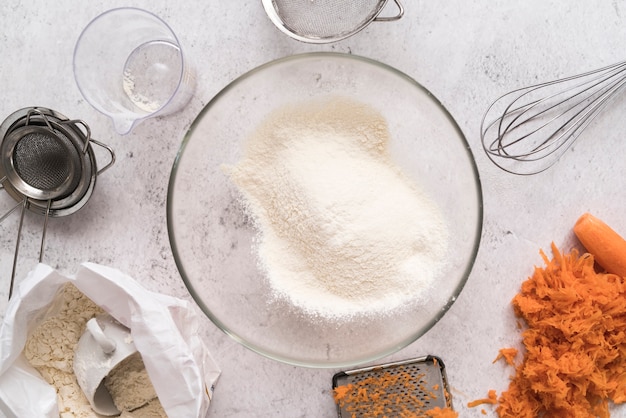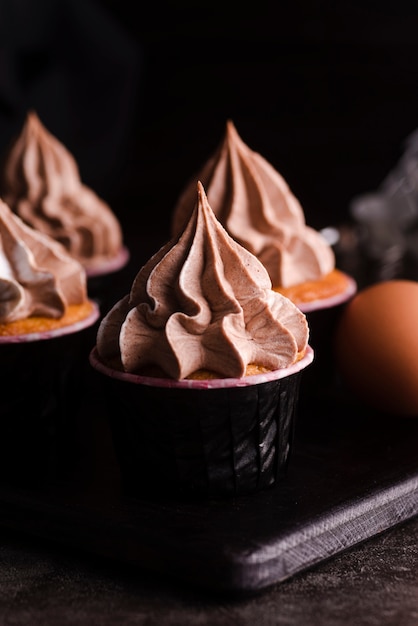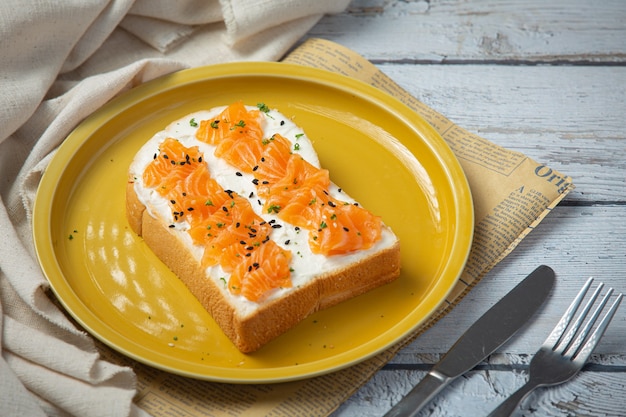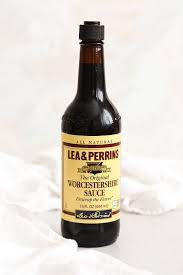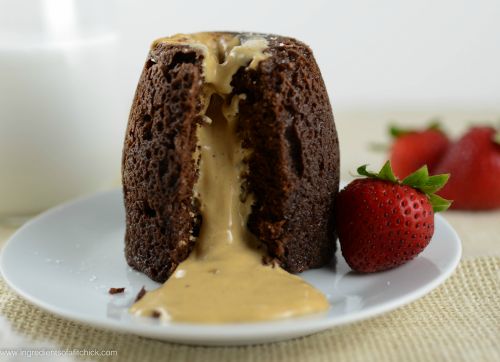Baking Soda and Baking Powder Key Differences Explained
The art of creating delicious baked goods often hinges on the precise selection of ingredients that influence texture and rise. While many home cooks may reach for familiar items found in their kitchen, the choice between two popular raising agents can determine the success of a recipe. Understanding the characteristics and appropriate applications of these key components can elevate your culinary endeavors.
These agents serve as crucial facilitators in the creation of light and fluffy textures, but they function differently in the baking process. Each type has its own unique properties and reactions, making them suitable for various scenarios. Identifying when to incorporate one instead of the other can make all the difference in achieving the perfect loaf, cake, or batch of cookies.
As you navigate the diverse world of baking, it’s essential to grasp the fundamentals of these ingredients. By emphasizing their distinct roles and knowing how to utilize them effectively, you’ll be well on your way to mastering the techniques that make every creation a success. Delve into the nuances of these leavening heroes to enhance your baking experience.
Baking Soda: Properties and Uses
This versatile ingredient serves a wide range of purposes in culinary practices, particularly in the realm of pastry-making. Its unique characteristics allow it to react under certain conditions, creating remarkable transformations in texture and flavor. Understanding its properties is essential for achieving the desired results in various recipes.
Characteristics
Primarily known as a leavening agent, this ingredient works by releasing carbon dioxide when it comes in contact with acidic elements and moisture. This reaction causes doughs or batters to expand, resulting in a light and airy final product. Additionally, it possesses natural deodorizing abilities, making it useful beyond the kitchen.
Applications
In culinary arts, it is often deployed in recipes that include buttermilk, yogurt, vinegar, or citrus juices. These acidic components trigger the leavening process, essential for fluffy cakes and biscuits. Moreover, it can be utilized in savory dishes, enhancing flavors and promoting browning during cooking. Beyond gastronomy, its cleaning properties are valued in household tasks, offering an eco-friendly alternative for stain removal and deodorizing.
Understanding Baking Powder Components
Exploring the constituents of leavening agents reveals their essential role in creating the desired texture and rise in various recipes. Each ingredient contributes uniquely to the overall effectiveness and application in different culinary creations.
Primary Ingredients
- acidulants: These substances interact with moisture and heat, producing carbon dioxide gas that promotes expansion. Common examples include cream of tartar and various food acids.
- carbonates: Sodium bicarbonate is frequently included to react with acidulants and create the necessary lift.
- cornstarch: Serving as a stabilizer, this ingredient helps absorb moisture and prevent premature reactions, ensuring the leavening agent remains effective until baking begins.
Types of Acidulants
- Monocalcium phosphate
- Calcium sulfate
- Sodium aluminum sulfate
A balanced combination of these elements guarantees that the leavening agent performs efficiently, yielding delightful results in a variety of baked goods.
When to Choose Baking Soda
Understanding when to opt for a particular leavening agent is essential for achieving desired results in culinary creations. This agent can provide a significant rise and light texture in various recipes when paired correctly with acidic components. Here are some situations where this option is especially beneficial:
- Acidic Ingredients: If your recipe includes items like yogurt, buttermilk, or vinegar, this ingredient reacts with the acid, creating carbon dioxide bubbles that cause the mixture to expand.
- Color and Flavor Enhancement: This agent can contribute to browning and caramelization, adding depth to flavors in baked goods such as cookies and cakes.
- Quick Recipes: It’s ideal for speedy preparations, as it works immediately upon mixing with wet ingredients, making it suitable for quick breads and pancakes.
- Specific Textures: When a recipe requires a chewy or dense final product, this option can help achieve that contrast beautifully.
By selecting this leavening agent in appropriate recipes, you can enhance the texture and taste, leading to a more satisfying culinary experience.
Scenarios for Using Baking Powder
Different culinary contexts call for specific leavening agents to achieve the desired texture and flavor in various recipes. Understanding when to incorporate this particular leavening agent can greatly enhance the final product, ensuring that baked goods rise appropriately and maintain a light, airy consistency.
Here are some common situations where this leavening agent is ideal:
- Cakes: Ideal for fluffy and soft cakes, especially in recipes that do not include acidic ingredients.
- Muffins: Provides a light and tender crumb in both sweet and savory varieties.
- Scones: Ensures a flaky texture, making them delicately rise while maintaining their tender quality.
- Pancakes: In its absence, pancakes may turn out dense; this agent guarantees a light and fluffy result.
- Quick Breads: Essential for achieving a good rise in recipes that skip the traditional fermentation process.
When creating recipes that rely on this particular leavener, it’s important to follow the quantities specified. Too little may lead to denser results, while too much can create a bitter flavor.
In summary, recognizing the contexts in which this agent excels can significantly influence the quality of your baked creations.
How Each Ingredient Affects Taste
Both substances play unique roles in enhancing flavors and textures in culinary creations. Their chemical properties not only contribute to the rise and texture of baked goods but can also subtly influence the overall taste profile of the dish.
| Ingredient | Taste Influence | Common Uses |
|---|---|---|
| First Option | Can impart a slight salty flavor, balancing sweetness. | Cookies, breads, and some cakes. |
| Second Option | Generally neutral, helping to enhance flavors without altering them. | Pancakes, pastries, and muffins. |
The choice between these ingredients can lead to distinct differences in taste. Selecting the appropriate component according to the desired outcome is essential for achieving optimal flavor and texture in culinary masterpieces.
Common Baking Mistakes to Avoid
Many home cooks stumble upon frequent errors that can lead to disappointing results in their culinary endeavors. Understanding these common pitfalls can enhance the quality of your creations and boost your confidence in the kitchen. Being aware of potential missteps will ensure a more enjoyable and successful cooking experience.
Neglecting Ingredient Temperatures: Using ingredients directly from the refrigerator can affect the final texture. Ensure that eggs, dairy, and other components are at room temperature when required, as this promotes better mixing and incorporates air more effectively.
Incorrect Measurements: Precision is key in achieving desired outcomes. Always measure dry and liquid components accurately, using appropriate tools like measuring cups and spoons. Even minor discrepancies can lead to imbalances in flavors or structure.
Skipping Preheating: Failing to preheat the oven can result in uneven cooking. Always allow your appliance to reach the desired temperature before placing your dish inside, as this helps achieve the perfect rise and texture.
Overmixing After Adding Flour: When flour is incorporated, mix just until combined to avoid tough textures. Overmixing activates gluten, leading to a denser final product.
Ignoring Recipes: While creativity is important, straying too far from tried-and-true recipes can yield unpredictable results. Follow instructions closely, especially for timing and temperatures, to achieve the best outcome.
Not Allowing Time for Resting: Allowing mixtures to rest can enhance flavor and texture. Ingredients need time to meld together, so don’t rush the process.
Being aware of these common mistakes can significantly improve your culinary results. By implementing careful practices and paying attention to details, you’ll elevate your cooking skills and enjoy a more rewarding experience in the kitchen.
Q&A: Baking soda vs baking powder
What is the main difference between baking soda and baking powder?
Baking soda is a pure sodium bicarbonate, which requires an acid and a liquid to become activated and produce carbon dioxide for leavening. On the other hand, baking powder contains sodium bicarbonate along with an acidifying agent (like cream of tartar) and a moisture-absorbing component (like starch). As a result, baking powder can react with moisture and heat, making it double-acting, and doesn’t always require additional acidity in the recipe.
When should I use baking soda instead of baking powder in my recipes?
You should use baking soda when your recipe includes acidic ingredients, such as yogurt, buttermilk, lemon juice, or vinegar. The acid in these ingredients will react with the baking soda, producing the necessary lift for your baked goods. For example, recipes like chocolate chip cookies that call for brown sugar and baking soda benefit from this chemical reaction, producing a tender, flavorful cookie.
Can I substitute baking powder for baking soda and vice versa?
While you can substitute baking powder for baking soda, it’s essential to adjust the quantity used. Since baking powder already contains an acid, you may need to increase the amount by several times depending on the recipe. Conversely, substituting baking soda for baking powder is trickier because you must add an acid to compensate for the lack of it in baking soda, leading to potential adjustments in flavors and textures that can be challenging to achieve. Therefore, it’s best to use the leavening agent specified in the recipe whenever possible.
How do I know if my baking soda or baking powder is still good to use?
To check if your baking soda is still active, mix 1/2 teaspoon with a little vinegar; if it bubbles vigorously, it’s good to use. For baking powder, combine 1 teaspoon with hot water; if it fizzes and bubbles, it’s still effective. If there’s little to no reaction in either test, it’s time to replace them to ensure your baked goods rise properly.
Are there any health differences between baking soda and baking powder?
Both baking soda and baking powder are generally safe for most people when used in typical cooking amounts. Baking soda, however, may provide potential health benefits such as acting as an antacid or aiding in digestion due to its alkaline properties. Baking powder, containing additional ingredients, usually has a higher sodium content. People monitoring their sodium intake should consider this when choosing between the two. Nonetheless, moderation is key, and it’s always best to consult a healthcare professional for personalized advice.
What is the difference between baking powder and baking soda in baking?
Baking powder and baking soda are both leavening agents used in baking, but they function differently. Baking soda is pure sodium bicarbonate and requires an acid in the recipe to activate. Baking powder, on the other hand, contains both an acid (usually cream of tartar) and a base, so it only needs moisture to create carbon dioxide and cause the batter to rise.
How much baking soda should be used per cup of flour in a recipe?
A general rule of thumb is to use 1/4 teaspoon of baking soda per cup of flour in a recipe. However, this can vary depending on the amount of acid in the recipe, as baking soda reacts with acidic ingredients to produce the leavening effect.
Can I substitute baking powder for baking soda in a recipe, and how much should I use?
Yes, you can substitute baking powder for baking soda in a recipe, but you’ll need to use more baking powder. Since baking powder is less potent than baking soda, you should use about 3 times as much baking powder as you would baking soda. For example, if a recipe calls for 1 teaspoon of baking soda, you would need to use 3 teaspoons of baking powder.
What is a good rule of thumb for how much baking powder per 1 cup of flour?
A good rule of thumb is to use 1 to 1 1/4 teaspoons of baking powder per 1 cup of flour in a recipe. This amount is generally sufficient to provide the necessary leavening without making the final product taste too bitter.
Why do some recipes call for both baking powder and baking soda?
Some recipes call for both baking powder and baking soda because they need the double action of both ingredients. Baking powder provides leavening at both the mixing and baking stages, while baking soda reacts with acidic ingredients to neutralize them and also contribute to the leavening process.
How does the amount of baking soda affect the final product in a recipe?
The amount of baking soda in a recipe can significantly affect the final product. Too much baking soda can cause a soapy or bitter taste, while too little might result in insufficient rising. It’s crucial to balance the baking soda with the acidic ingredients in the recipe to achieve the desired texture and flavor.
What’s the difference between using 1 teaspoon of baking powder vs 1 teaspoon of baking soda?
Using 1 teaspoon of baking powder vs 1 teaspoon of baking soda will have different effects on a recipe. Baking soda is stronger and requires an acid to activate, so 1 teaspoon of baking soda is typically used with 1-2 teaspoons of an acid like lemon juice or vinegar. Baking powder, which contains its own acid, is weaker, so it’s often used in larger quantities to achieve the same leavening effect.
How does baking soda react when mixed with acidic ingredients in baking?
When baking soda is mixed with acidic ingredients in baking, it reacts by producing carbon dioxide gas. This reaction causes the batter or dough to rise, creating air bubbles that contribute to the light and fluffy texture of baked goods. The acid in the recipe is crucial for this reaction to occur.
Is it possible to use either baking powder or baking soda in Irish soda bread?
Irish soda bread traditionally uses baking soda as the leavening agent because it reacts with the buttermilk or other acidic ingredients in the dough. However, you might be able to substitute baking powder if you don’t have baking soda, though the texture and taste might be slightly different due to the differing leavening mechanisms.
What happens if a recipe calls for baking soda and not enough acid is present?
If a recipe calls for baking soda and there isn’t enough acid present, the baking soda won’t fully react, leading to less leavening and a potential soapy or metallic taste in the final product. It’s important to ensure that there is sufficient acid in the recipe to activate the baking soda properly.
